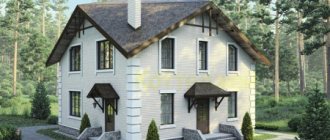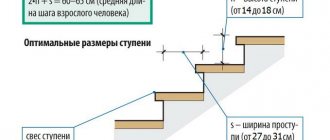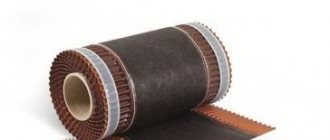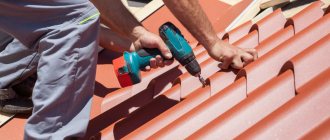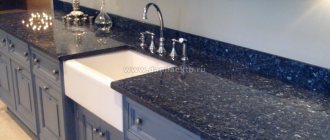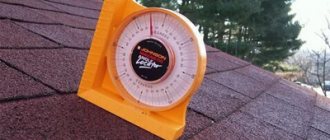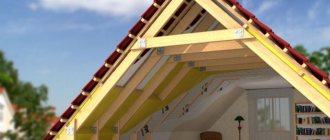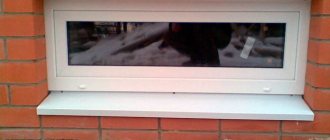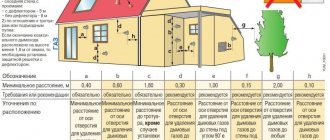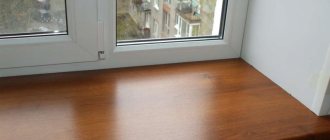Metal tiles are a modern roofing material consisting of sheets of aluminum, copper or, most often, galvanized steel made by cold stamping, imitating the texture of ceramic tiles.
To protect against the harmful effects of atmospheric phenomena, the sheets are covered with a layer of polymer materials .
Sales of metal tiles are growing every year, and they are increasingly used in both municipal and individual construction projects.
Let's try to understand the reasons for this popularity, the varieties and features of the use of this material. In this article you will learn the size of a metal roofing sheet and other technical characteristics.
Egor, review on stroystm.ru
Egor has been using metal tiles for 12 years, claiming that the material has retained all its performance characteristics. He hopes that for another 20 years he will not have to think about replacing metal tiles with a new coating.
Egor was lucky, according to the experts of the portal where the review was left, because he involved professional craftsmen in the work, who performed the installation correctly, observing all technologies and rules. Minimal mistakes made when covering a roof with metal tiles lead to leaks, deformation of the material, and one scratch left by accident causes terrible corrosion to grow.
Full text of the review: stroystm.ru/otzyvy-o-krovle/otzivi/otzyvy-o-kryshe-iz-metallocherepitsy
Additional elements
Additional elements are roofing parts that do not fulfill the purpose of the roofing material, but are necessary for fixing it, making joints and turns, installing additional structures, ensuring tightness, and draining excess precipitation. The main types of additional elements are:
- ridge (ridge strip) - a profile in the shape of a corner, cornice, semicircle or complex shape, installed at the junction of sheets of metal tiles on the upper ridge;
- end strip - a profile in the shape of a corner or a complex shape that covers the front and rear ribs of the roof;
- strips of external and internal corners - profiles in the shape of a corner or a complex shape, designed for turning metal tiles at the appropriate angle;
- valley strip - a complex-shaped profile that provides the lower joint of the roof wings, as well as the removal of excess precipitation from this joint;
- ebb - a profile in the shape of a wide channel or semicircle, located at the edge of the roof slope and performing the function of draining rainwater;
- snow retainer bar - a triangular profile that prevents snow layers from sliding;
- plugs are shaped sheet metal products that provide sealing of joints between straight surfaces and complex-shaped surfaces.
Additional elements
In addition, some sources indicate stairs, hatches, cornices, caps, chimneys, even insulation and self-tapping screws as additional elements. Of course, all this is necessary when installing the roof, but how to classify these items is a controversial issue.
This coating is the material of the future, superior to most competitors in economic, ergonomic and performance indicators . We hope our article was useful for studying the basic parameters of metal tiles, their properties and types.
Weaknesses of metal tiles
Having studied the reviews, we can briefly highlight a number of disadvantages characteristic of metal tiles:
- the roof is noisy during rain and hail;
- the appearance of unpleasant loud sounds and creaks during strong winds;
- difficult installation due to the large weight of the sheets;
- a large amount of waste remaining after the construction of the roof, which is quite critical, because metal tiles are far from cheap;
- susceptibility to corrosion, instability to mechanical damage;
- weak snow retention, strong heating and subsequent deformation of the material under the influence of UV rays.
To transport massive sheets of metal tiles, you have to hire a truck, you need to buy a lot of components, and attract workers who will help with the installation. Another important expense item is sound insulation, because without this work, living in the house will not be very comfortable.
Advantages and disadvantages
The main advantages of metal tiles include:
- relatively low cost ;
- long service life ;
- low specific gravity ;
- resistance to atmospheric agents;
- attractive appearance ;
- fire safety .
The low cost of roofing is most clearly evident in comparison with its main historical competitor - ceramic tiles. Mechanization of production, the possibility of simultaneous operation of a large number of production lines and the availability of materials and technologies used make metal tiles a low-cost material to manufacture.
And taking into account the reliability of the finished product, strength and resistance to impacts, it is obvious that in the ratio of cost to service life, metal tiles leave all other roofing materials far behind.
- Life time . This important indicator can vary significantly depending on the materials used (the quality of both metal and polymers is important), on the thickness and profile of the sheet, as well as on external factors. Most manufacturers indicate comfortable operation for 10-25 years , but high-quality metal tiles from leading brands can perform their functions for more than half a century.
- Specific gravity . Specific gravity refers to the ratio of the mass of a sheet of roofing material to its area. The average weight of 1 m2 for metal tiles is about 6 kg/m2 . Such a low value indicates the ease of installation of the material and the almost complete absence of additional loads on the load-bearing structures of the roof and foundation.
- Wear resistance . Resistance to atmospheric agents manifests itself differently in different brands of metal tiles. The primary factor here is the quality of the polymer coating, which is responsible for protecting the metal layer from corrosion and mechanical damage. High-quality polymers are resistant to aggressive environments, ultraviolet radiation, and shock loads (for example, hail). They do not lose their shape and appearance even in the most extreme climatic zones.
But it is the appearance that is often a stumbling block for people who are thinking about purchasing roofing materials, but do not have the proper experience in this. They expect some kind of surrogate ceramic tile roof, not realizing that it has long faded into the background not only in quality, but also in design.
Modern metal tiles are manufactured symmetrically and accurately, and the perfection of technological processes allows them to imitate any shape. So metal tiles are suitable even for projects with a clearly defined retro style.
In the case of fire safety, everything is more than obvious. None of the components of the metal tile is capable of burning , smoldering, or in any way contributing to the occurrence or spread of a flame.
Advantages of coverage
However, the obvious disadvantages of metal tiles . These include:
- excessive consumption of material during installation;
- rapid wear if the top layer is damaged ;
- relatively low sound insulation ;
- danger of snow melting .
NOTE!
The overconsumption of material is explained by the fact that the size of metal roof tiles has fixed values , which is why the occurrence of excess metal tile scraps is inevitable. This overspending is especially noticeable when covering roofs of complex shapes with many angles and bends.
It would be unfair not to notice that the same drawback is characteristic of almost all roofing materials , with the exception, perhaps, of ceramic tiles.
- The most common type of damage to the top layer (polymer) is chips, cracks and peeling as a result of mechanical damage, for example, during transportation, cutting the sheet or fixing it to a frame. In places where the polymer layer is damaged, as a rule, corrosion quickly occurs , which is fraught with the loss of not only aesthetic properties, but also the tightness of the roof.
- The sound insulation properties of the coating are a controversial issue. Noise insulation will indeed be extremely low if the sheets are mounted directly to the frame. Then every drop of rain, not to mention hail, will resound under the roof. However, when using a sound-insulating substrate and following metal tile installation technologies, the sound insulation of the structure will be in no way inferior to any other type of roofing.
Due to the specific shape of the leaf surface, snow layers may melt, which can be dangerous to the life and health of others. Solving this problem is very simple - just use snow-retaining accessories.
Sheet length: which one to choose
Many people believe that if tiles are produced up to 8 meters long, then you need to buy solid sheets for your roof. The motivation is the absence of horizontal joints, which is supposedly better for maintaining the tightness of the roof, as well as the fast installation speed.
But experts say: this opinion is wrong. A long sheet is more difficult to pack, transport and carry, and installation can only be done by experienced installers.
Metal tiles are a flexible material. With large deflections of the sheet, deformations and changes in shape occur due to stretching of individual sections. As a result, there is a discrepancy in the installation of longitudinal locks. The edges diverge and do not adhere tightly to each other. This is not only noticeable, but also impairs the protective functions of the roof. You have to additionally nail down the edges of the metal tiles so that there are no gaps left.
Delivery of sheets longer than 4 m is a separate issue. It is much cheaper and easier to find transport for shorter items. In addition, carrying a sheet 6-8 m long is not the same as 3-4 m.
Therefore, it is recommended to order materials no more than 4 m. By the way, information for those who are afraid of horizontal joints - during installation they are closed from above with a floating lock and become completely invisible.
Video
| Manufacturer | Total length, mm | Length overlap, mm | Useful length, mm | Full width, mm | Overlap width, mm | Usable width, mm |
| Metalprofile | 3650; 2250; 1200; 500 | 150 | 3500; 2100; 1050; 350 | 1190 | 90 | 1100 |
| Grand Line | 3630; 2230; 1180; 480 | 130 | 3500; 2100; 1050; 350 | 1180 | 80 | 1100 |
| Stynergy | 3630; 2230; 1180; 480 | 130 | 3500; 2100; 1050; 350 | 1180 | 80 | 1100 |
| Finish Profiles | 3600; 2200; 1150; 450 | 100 | 3500; 2100; 1050; 350 | 1185 | 85 | 1100 |
| Poimukate | 3630; 2230; 1180; 480 | 130 | 3500; 2100; 1050; 350 | 1180 | 80 | 1100 |
| Interprofile | 3620; 2220; 1170; 470 | 120 | 3500; 2100; 1050; 350 | 1160 | 60 | 1110 |
| Mera System Anna | 3620; 2220; 1170; 470 | 120 | 3500; 2100; 1050; 350 | 1140 | 90 | 1050 |
| Mera System Eva | 3620; 2220; 1170; 490 | 120 | 3500; 2100; 1050; 300 | 1160 | 80 | 1080 |
| Pelti and Rauta | 3630; 2230; 1180; 480 | 130 | 3500; 2100; 1050; 350 | 1180 | 80 | 1100 |
| Weckman | 3630; 2230; 1180; 480 | 130 | 3500; 2100; 1050; 350 | 1190 | 90 | 1100 |
| Ruukki® Adamante | 3650; 2250; 850 | 150 | 3500; 2100; 700 | 1153 | 28 | 1125 |
| Ruukki® Finnera | 705 | 45 | 660 | 1190 | 5 | 1140 |
Colors available to the consumer
The available colors depend on the specific manufacturer and, as a rule, the choice ranges from 5-10 options to 50 different colors and shades. To ensure that the manager understands you correctly, remember the code of the desired color from the RAL table.
Popular options according to RAL scale
At the end of the article there are photos of what the material looks like directly on the roof.
Prices
The cost of metal tiles depends on the thickness of the sheet, coating, type of profile, and manufacturer. It also differs by region. The cheapest material is offered by Russian manufacturers (RUB per 1 m2):
- Grand Line. Quinta - from 370 rubles, Modern - from 275 rubles, Classic - from 350 rubles;
- Metal profile. Monterrey - from 303 rubles, Supermonterrey - from 260 rubles, Cameo - from 380 rubles.
- Finnish company Ruukki. Adamate - from 770 rubles, Decorray - from 820 rubles, Finnera - from 760 rubles, Monterrey Eco - from 680 rubles, Elite - from 1260 rubles.
Economy class metal tiles in the Russian Federation can be purchased at a price in the range of 250–575 rubles/sq.m.
What types of metal tiles are there? Available types of roofing materials
Profile types
All metal tiles available on the market differ in the type of profile, which gives the roof a unique pattern. The following options are in high demand on the Russian construction market:
"Monterrey"
This is a rigid profile that accurately imitates ceramic tiles. Profiles of this type are characterized by a length of 1,100 mm , 6 waves with a pitch of 350 millimeters . The height of the profiling can increase or decrease, affecting the rigidity of the structure. The use of such metal tiles gives the building a classic look of modern architecture.
"Cascade"
It is characterized by strict geometry and rectangular shapes. If you order metal tiles of this profile in brown, the roof will resemble a chocolate bar. The width of such sheets is 1,120 millimeters , the structure is 5 waves of 224 mm , the height of the steps is 22.5 mm . The advantages of the profile are the minimum number of joints, which ensures material savings. Thanks to its strict shapes, the profile is suitable for residential and commercial development.
"Joker"
The profile of the metal tile is reminiscent of the popular “Monterrey”, with a more “lush” geometry. With standard sheet sizes, the wave height is 49 mm ; accordingly, in low-rise construction conditions, a roof made from such a profile will look more attractive.
"Athena"
Quite an original profile, where a wave-like structure alternates with a flat base. Such metal tiles fit organically into any architectural style, therefore they are often used for the reconstruction of buildings.
In addition to the usual types of metal tiles, new models with original designs are appearing on the market. For example: “Bongo”, “Andalusia”, “Shanghai”. The sheets attract attention with a relief pattern (wave height up to 66 mm ) and Z-shaped locking connections, which ensures installation without the use of external fasteners.
Types of metal profiles from Finnish colleagues
Metal tile sheet base materials
The types of metal tiles on the market usually differ in the type of profile. However, this is not the only distinguishing feature. A different base is used for manufacturing, which largely determines the characteristics of the roof. For example:
- Steel . This is the most common type of metal tile on the domestic market. The base material is usually coated with a layer of zinc to improve the roof's durability and corrosion resistance.
- Aluminum . This profile is less common, but has a number of undeniable advantages. In particular, aluminum is neutral to any external influences and therefore does not require additional processing. In addition, the material is quite light, which reduces the load on the foundation and supporting structures; installation does not require durable sheathing. The disadvantages of aluminum metal tiles include a very meager palette of colors and high cost.
- Copper . This is an initially expensive material that is rarely used in private construction. Copper metal tiles look impressive and pretentious, especially when covered with a greenish coating. The material does not require additional protection against corrosion, however, it is mainly used for the reconstruction of architectural and antique monuments.
It is worth noting that the most common and practical is galvanized steel metal tiles, which we will consider in the future.
Standard sizes
When purchasing metal tiles, you can see that each manufacturer indicates certain sizes.
Width
This size of roofing material is a standard and constant parameter for all metal profile manufacturers. This is due to the fact that the production uses steel supplied in rolls.
Manufacturers of this metal use the same rolling technologies and similar equipment. The main dimension is considered to be 1180 mm. Although deviations may occur: the minimum and maximum widths can reach 1160 and 1190 mm.
The picture shows metal tiles:
And although there are some differences in the actual width, there is one indicator that is constant for many brands of metal tiles produced. This is the useful width of the sheet, which is 1100 mm.
When determining the dimensions of a metal profile, you can come across such a term as overlap. Its task is to protect the roof from water leaks. Measured in width on both sides. But the useful width is the difference between the overlap and the actual width.
Length
The length of the metal profile can take different values. Today, manufacturers produce a set of standard sheets, the length of which can reach 500-3650 mm. Although the technology allows the production of material with a length of up to 8000 mm. Experts were able to experimentally determine the optimal length size and it is 4000 mm.
Thus, we can highlight the following advantages of the resulting products:
- The costs of materials for fastening the profile are reduced;
- Workers expend less effort when lifting the profile, since the number of sheets is smaller. Roofing work is carried out quickly and at the same time its cost is reduced.
- The accepted length size is considered optimal for loading and storage.
The useful length is calculated similarly to the useful width. In this case, the overlap along the length will be 100-150 mm. It is worth understanding that such parameters may vary, since each manufacturer has their own.
Thickness
The standard thickness of a metal profile for roof installation is 0.4-0.6 mm. Although many manufacturing plants use steel sheets with a thickness of 0.35 mm to save money. Although there are manufacturers who, on the contrary, increase this size to 0.8 mm.
The final thickness will depend on the number of layers and the thickness of the painting material that is applied to the steel sheet. The optimal thickness of the finished profile is 0.45-0.5 m. This is due to the fact that the service life is 13-15 years.
The smaller the thickness of the steel, the less it will last you. For a metal profile with a thickness of 0.35 mm, there is a high risk that damage may occur on its surface during transportation and installation.
If you take steel with a thickness of 0.8mm, then it is more durable. But such material will also be several times heavier than standard analogues. This will also negatively affect the price of the finished product due to its high cost.
How ventilation passes through a metal roof is described in detail in this article.
Photos and information from this article will help you understand what installation of sheathing under Monterrey metal tiles is.
This article will help you understand what Monterrey classic metal tiles look like and how good and effective they are in use: https://resforbuild.ru/paneli/krov/cherepica/metallocherepica-monterrej-cveta.html
What is the GOST for Monterrey metal tiles and how to make the right choice, the information from the article will help you understand.
Wave height
The height and pitch of the wave are important characteristics that affect the dimension of the metal profile. The height takes the following values - 12-80 mm. But a metal tile with a wave height of 12-30 mm is considered budget. The elite category includes a profile with a wave height of 50 mm. When installing a roof of this kind, the covering will have a very presentable and impressive appearance. In addition, such material personally retains water flows during heavy rain and gusts of wind.
Leading manufacturers produce with a wave pitch of 183-185 mm. This size is optimal so that the material can maintain its rigidity. It has sufficient strength characteristics for installation on the roof. It will be convenient for workers to work with fasteners when installing the coating.
Size and weight
These two parameters have an inextricable connection with each other. Moreover, the mass of the material directly depends on its dimensions. First of all, the weight is influenced by the length and thickness of the profile. The larger they are, the greater the weight.
This cannot but affect costs and productivity. Also, the weight of the final roofing structure affects the strength of the house. This must be taken into account when planning construction. The standard weight of a metal product is 4-5 kg per 1 m2.
What else should you pay attention to?
In addition to the above parameters, when choosing a roofing material, you should pay attention to the following nuances:
- Storage conditions. For a number of products, restrictions are established on placement in packs and other long-term storage conditions.
- Installation features. When installing a metal roof, it is important to pay attention to the fastening technology. Many models have hidden fasteners. In addition, the useful size of the sheets depends on the overlap that will have to be provided at the joints. It is also necessary to clarify the restrictions on the maximum slope angle of the roof slope.
- Features of care. Attention should be paid to the degree of protection of the steel base if the integrity of the polymer coating is compromised.
When planning the construction or reconstruction of a roof, you must make sure that the selected metal tiles correspond to the climate zone. When purchasing a product, you should check its quality, absence of deformation, uniformity and integrity of the coating.
Storage rules ↑
In some cases, metal tiles are purchased in advance. This may be due to acceptable cost or financial capabilities. For proper storage, certain rules should be taken into account. After production, the surface is covered with a protective film. It is necessary to prevent minor scratches and abrasions during transportation and installation. Its removal should be done only after installation on the roof.
Before storing metal tiles, you need to prepare the room. In addition, the following recommendations must be taken into account.
- Location – horizontal only. Rubber or plastic spacers are installed between the sheets.
- Temperature range – from 10 to 35 degrees. Otherwise, during long-term storage, the protective film will be difficult to remove.
- The maximum height of the stacking headquarters should not exceed 70 cm.
- It is prohibited to leave any objects on the surface of the metal tile.
You should also protect it from direct sunlight, as this will also affect the complexity of removing the film. Throughout the storage period, the sheets must retain their original shape. If any part is deformed, the metal tile is laid horizontally on a flat surface. After 5-7 days, the previous configuration should be restored.
Advice
Attempts at straightening yourself may lead to damage to the protective layer.
Is it possible and how to store metal tiles in winter? To do this, you need to adhere to the temperature conditions recommended above. The surface should be protected from moisture. With sudden changes in temperature, condensation may form on the metal tiles, which will damage the protective film.
Soft roof
This concept today includes such a popular material as bitumen shingles. Externally, these are flat sheets of small size, approximately 100 by 34 cm. The sheets have figured petal cutouts of various shapes. This coating looks like a more expensive material - tiles.
Unlike other rolled roofing coverings, soft roofing copes “excellently” with high temperatures from 100 to 120 degrees above zero. This negates the fear that after a hot summer the roof will begin to slide. Bituminous shingles are not afraid of cold, and also have low thermal conductivity. It is unpretentious in repair, the damaged area is easily cut out, and a new one is glued in its place.
The service life according to the documents is 15 years. But if the installation of a soft roof was carried out in compliance with all the rules, then it will last much longer, at least 30 years.
What's inside? Composition and structure of roofing sheets
Metal tiles have a multilayer structure. The base is usually taken from a sheet of metal made using cold rolling technology. Then the finished profile is subjected to stepwise processing. In particular:
- A layer of phosphate is applied to prevent corrosion.
- Priming is carried out in order to increase the adhesion of the metal to the finishing coating.
- A polymer coating of various colors is applied to the front surface.
- The back side of the sheet is treated with a protective varnish.
As a result, metal tiles have the same composition, regardless of the manufacturer, however, roofing characteristics and quality may vary.
Read about composite tiles, a close relative of the subject of our conversation here >>>

